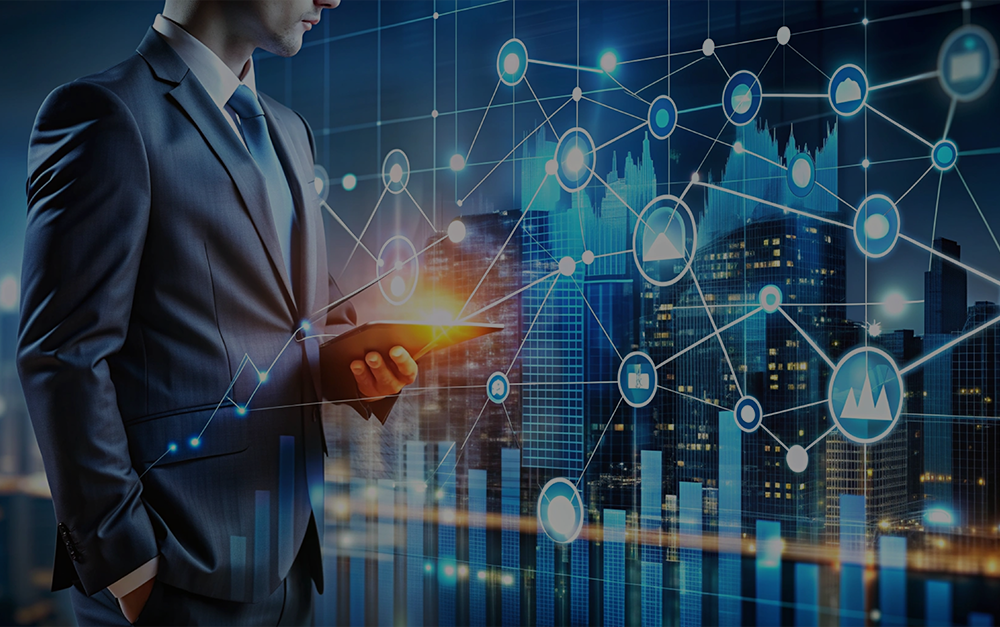Digitalization, a transformative force
across various industries, is leaving a prominent mark on the energy sector.
The profound implications of this transition are both exciting and challenging.
The energy sector, traditionally characterized by physical infrastructure and
manual processes, is now at the forefront of technological innovation,
reshaping how we produce, consume, and think about energy.
The implications of these advancements are
far-reaching. For instance, grid operators are now employing AI algorithms to
anticipate demand spikes and adjust distribution accordingly. This ensures
efficient energy use, preventing both wastage and overloading. Meanwhile, IoT,
with its vast network of connected devices, enables predictive maintenance.
Energy companies can now anticipate equipment failures before they occur,
ensuring minimal disruptions and optimizing operational costs.
Additionally, the surge in distributed
energy resources (DERs), like solar panels and wind turbines, can be
efficiently managed through these digital platforms. Traditional grids weren’t
designed to manage the inflow from multiple small energy sources. But with the
integration of AI and IoT, energy from these DERs can be effectively harnessed,
stored, and distributed, marking a significant stride towards a more
sustainable energy framework.
Enhanced Grid Management and Efficiency
As we navigate this shift, it's crucial to
understand its driving forces. Consumers today, armed with information, are
demanding transparency, efficiency, and sustainability from their energy
providers. The global narrative around environmental consciousness further
amplifies these demands. As a result, the sector is under immense pressure to
innovate, reduce carbon footprints, and align with international green
initiatives.
Modern grids, bolstered by digital
technologies, are no longer passive conduits of electricity. They are evolving
into 'smart grids' that can actively monitor and adjust energy distribution in
real-time. With the integration of Internet of Things (IoT) devices, Artificial
Intelligence (AI), and advanced analytics, grid operators can predict demand
spikes, manage distribution more effectively, and reduce transmission losses.
Such enhanced efficiency not only ensures energy savings but also contributes
to reduced operational costs.
Integration of Renewable Energy Sources
Digital tools are enabling seamless
integration of renewable energy sources, like solar and wind, into the grid.
These energy sources, though sustainable, are intermittent. Advanced predictive
analytics and AI can now forecast energy generation from these sources,
adjusting the grid's energy mix accordingly. Digital platforms also facilitate
better energy storage solutions, ensuring that excess energy generated during
peak periods is not wasted but stored for future use.
The implications of these advancements are
far-reaching. For instance, grid operators are now employing AI algorithms to
anticipate demand spikes and adjust distribution accordingly. This ensures
efficient energy use, preventing both wastage and overloading. Meanwhile, IoT,
with its vast network of connected devices, enables predictive maintenance.
Energy companies can now anticipate equipment failures before they occur,
ensuring minimal disruptions and optimizing operational costs.
Additionally, the surge in distributed
energy resources (DERs), like solar panels and wind turbines, can be
efficiently managed through these digital platforms. Traditional grids weren’t
designed to manage the inflow from multiple small energy sources. But with the
integration of AI and IoT, energy from these DERs can be effectively harnessed,
stored, and distributed, marking a significant stride towards a more sustainable
energy framework.
Empowering Consumers
With the rise of smart meters and connected
home devices, consumers are no longer passive recipients of energy. They are
now active participants in the energy ecosystem. These tools provide real-time
data on energy consumption, allowing consumers to make informed decisions,
reduce wastage, and even sell back excess energy to the grid. Such a shift not
only democratizes the energy landscape but also fosters a culture of
conservation and sustainability.
Challenges Ahead
However, this digital revolution is not
without challenges. Cybersecurity emerges as a primary concern. As our grids
become more connected, they are also more vulnerable to cyber-attacks that
could disrupt energy supply or compromise consumer data. Addressing these risks
requires a robust digital infrastructure, regular updates, and stringent
regulations.
The pace of technological change also means
that there's a growing skill gap in the energy sector. Existing professionals
need to upskill, and new entrants must be adept at navigating both energy and
digital landscapes. Collaborative efforts between educational institutions,
industry stakeholders, and policymakers are essential to address this
challenge.
But beyond these challenges lies a vision
of immense potential. The horizon shows glimpses of decentralized energy
systems, where communities could potentially become self-reliant powerhouses,
generating, storing, and trading energy. Urban landscapes might evolve into
smart cities, where every device collaborates in a symphony of efficiency,
optimizing energy consumption.
The transition towards renewable energy,
coupled with digital tools, presents an opportunity to reimagine energy
distribution. Imagine a world where homes with solar panels not only generate
power for their use but also feed excess energy back to the grid or directly to
neighbors. Blockchain technology could facilitate these transactions, creating
a transparent, decentralized energy trading system.
The Road Ahead
In the grand scheme of things,
digitalization in the energy sector is more than just a technological shift;
it's a paradigm change. It promises a future where energy is more sustainable,
grids are more resilient, and consumers are more empowered. However, realizing
this future requires a balanced approach, one that embraces innovation while
addressing inherent challenges.
Harnessing the Power of Diverse Global Insights and Revolutionary Research Techniques
At Astute Connect, we pride ourselves on our global market research teams, whose diverse expertise spans continents and industries. Our innovative methodologies and unique perspectives converge to deliver bespoke solutions, tailored to meet every nuance of your business needs, ensuring not just growth, but a trajectory towards industry leadership
Contact Us
.png)

